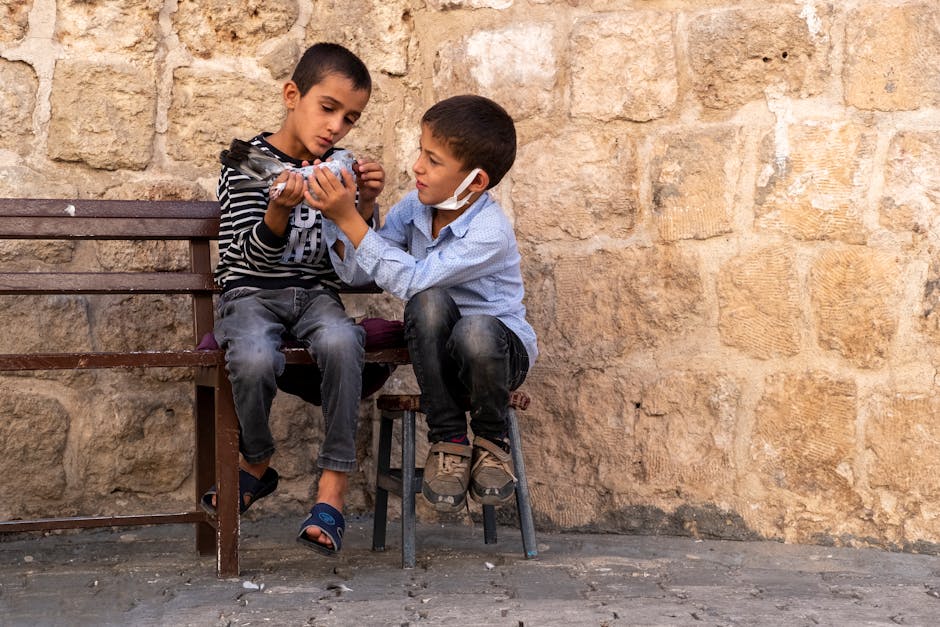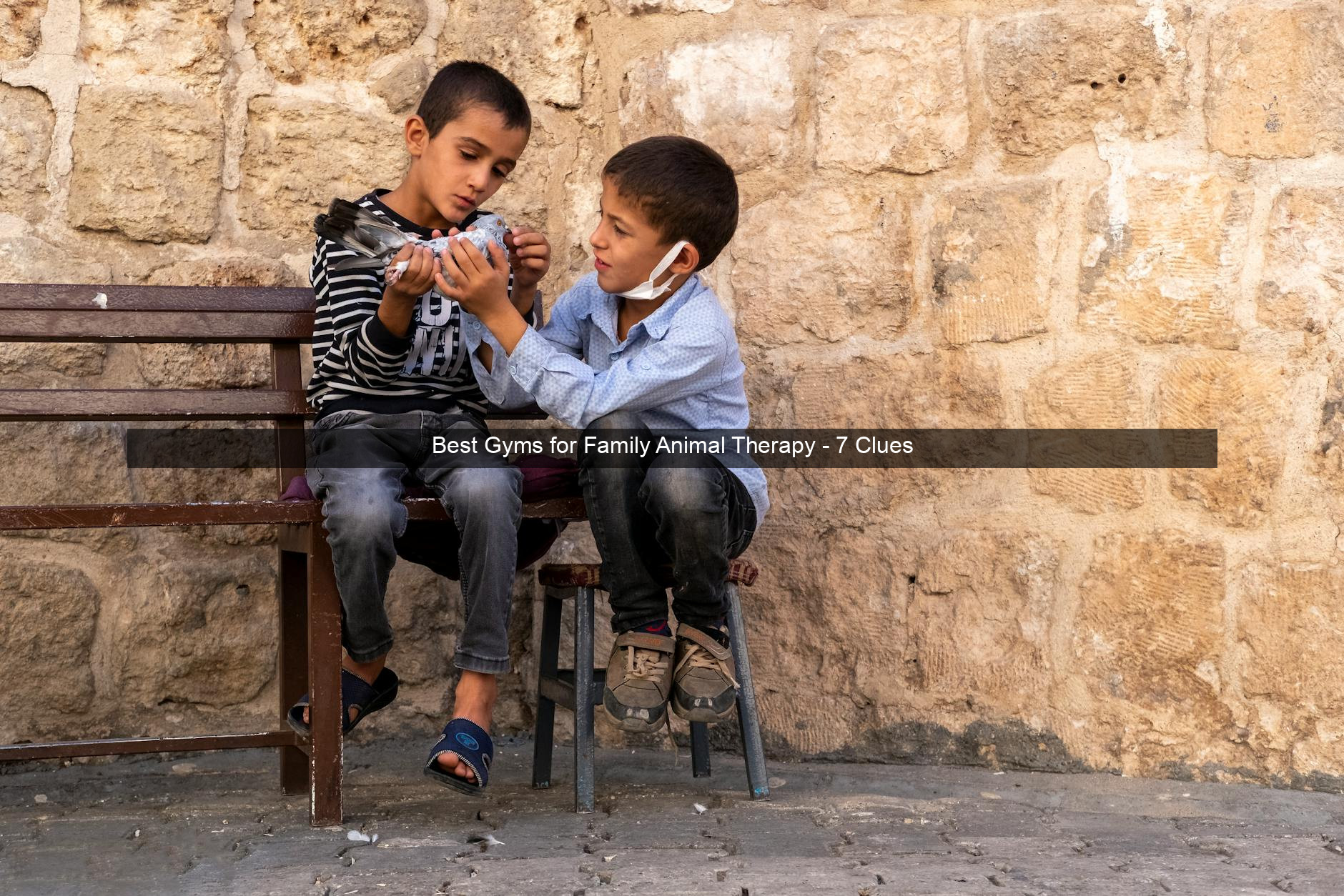7 Clues to Finding the Best Gyms for Family Animal Therapy
Imagine a world where fitness and furry friends intertwine, where the joy of exercise meets the comfort of animal companionship. This is the promise of family animal therapy gyms, a growing trend that combines the benefits of physical activity with the therapeutic power of animals. Finding the right gym for this unique experience, however, requires careful consideration. Not all gyms are created equal, and incorporating animals adds another layer of complexity. This article will provide seven crucial clues to help you navigate the search and discover the perfect family animal therapy gym for your loved ones.

These gyms offer a unique opportunity to strengthen family bonds while improving physical and mental well-being. Whether you’re looking for a fun way to get active with your children, seeking therapeutic benefits for a family member with special needs, or simply wanting to enjoy the company of animals while you work out, finding the right gym is essential. The following clues will guide you toward a fulfilling and enriching experience.
Animal Welfare Practices
Prioritizing Animal Well-being
A reputable family animal therapy gym prioritizes the well-being of its animal companions. Look for gyms that provide spacious, clean, and stimulating environments for the animals. Observe how the animals interact with staff and participants. A healthy and happy animal will be relaxed, engaged, and responsive, not stressed or withdrawn. This demonstrates a commitment to ethical animal care.
The animals should have access to fresh water, appropriate food, and regular veterinary care. Ask about the gym’s policies regarding animal breaks, rest periods, and overall health management. A transparent and proactive approach to animal welfare is a key indicator of a responsible and caring facility.
Ensure the gym adheres to strict hygiene protocols to prevent the spread of diseases between animals and humans. Cleanliness and sanitation are paramount in maintaining a healthy environment for both participants and animal companions. Observe the gym’s cleaning routines and inquire about their disease prevention measures.
Species-Appropriate Interactions
Different animal species have different needs and temperaments. A good family animal therapy gym understands this and tailors its programs accordingly. Horses, for example, might be incorporated into equine-assisted therapy sessions, while dogs might participate in agility courses or provide emotional support during workouts. The key is to ensure that the activities are appropriate for the species involved.
Observe how the animals are integrated into the gym’s activities. Are they treated with respect and allowed to express their natural behaviors? Avoid gyms that force animals into unnatural or uncomfortable situations for the sake of entertainment. The focus should always be on the animal’s comfort and well-being.
The gym should have clear guidelines on how participants should interact with the animals. This includes rules about touching, feeding, and approaching the animals. These guidelines should be communicated clearly to all participants to ensure the safety and comfort of both animals and humans.
Trained and Certified Staff
The staff at a family animal therapy gym should be trained and certified in animal handling and welfare. They should have a deep understanding of animal behavior and be able to recognize signs of stress or discomfort in the animals. This expertise is essential for ensuring the safety and well-being of both the animals and the participants.
Inquire about the staff’s qualifications and experience in working with animals. Look for certifications in animal-assisted therapy, animal behavior, or related fields. The staff should also be knowledgeable about the specific needs of the animal species present in the gym.
The staff should be able to effectively manage interactions between animals and participants. They should be able to guide participants on how to approach and interact with the animals in a safe and respectful manner. This includes providing clear instructions and intervening when necessary to ensure the comfort of both animals and humans.
Facility and Equipment
Clean and Safe Environment
A clean and safe environment is crucial for any gym, but it’s especially important in a family animal therapy setting. The gym should be well-maintained, with clean floors, sanitized equipment, and adequate ventilation. This helps prevent the spread of germs and ensures a comfortable workout experience for everyone.
The gym should have designated areas for animal interaction and exercise. These areas should be designed to meet the specific needs of the animals, providing ample space, appropriate flooring, and enrichment activities. This ensures the animals have a comfortable and stimulating environment.
Safety protocols should be in place to prevent accidents and injuries involving both humans and animals. This includes clear signage, designated pathways, and procedures for handling emergencies. The gym should also have a first-aid kit readily available.
Specialized Equipment
Depending on the types of animal therapy offered, the gym may have specialized equipment. This could include agility courses for dogs, sensory integration tools for children interacting with animals, or specialized equipment for equine-assisted therapy. The equipment should be well-maintained and appropriate for the intended use.
The gym should have appropriate equipment for handling and caring for the animals. This might include grooming tools, feeding stations, and waste disposal systems. The equipment should be clean and in good working order to ensure the animals’ health and hygiene.
The gym should provide adequate storage for animal-related equipment and supplies. This helps maintain a clean and organized environment and prevents clutter that could pose a safety hazard to both humans and animals.
Accessibility for All
Family animal therapy gyms should be accessible to individuals of all abilities. This includes providing ramps, elevators, and accessible restrooms for those with mobility challenges. The gym should also consider the needs of individuals with sensory sensitivities or other special needs.
The gym should have designated areas where individuals can interact with animals in a quiet and controlled setting. This can be particularly beneficial for individuals with anxiety or sensory processing difficulties. The gym should also offer programs and activities that are adapted to meet the needs of diverse participants.
The gym should have trained staff who are knowledgeable about working with individuals with disabilities. They should be able to provide appropriate support and accommodations to ensure that everyone can participate fully and safely in the gym’s programs.
Program Variety and Expertise
Diverse Program Offerings
Qualified Professionals
Customized Approach
Community and Support
Sense of Belonging
Support Network
Educational Resources
Cost and Value
Transparent Pricing
Value-Added Services
Financial Assistance
Location and Accessibility
Convenient Location
Accessible Facilities
Transportation Options
Reviews and Testimonials
Positive Feedback
Credible Sources
Verification of Claims
Conclusion
Choosing the right family animal therapy gym is a significant decision. By considering these seven clues, you can make an informed choice that benefits both your family and the animals involved. Remember to prioritize animal welfare, facility quality, program diversity, community support, and cost-effectiveness. With careful research and consideration, you can find a gym that provides a positive and enriching experience for everyone.
Ultimately, the best gym for your family will depend on your individual needs and preferences. Take the time to visit different gyms, meet the staff, and observe the animals. This will give you a firsthand sense of the gym’s culture and commitment to providing a high-quality experience. By following these clues, you can embark on a journey towards improved well-being for your family, all while enjoying the unique benefits of animal companionship.
What are the key factors to consider when choosing a family animal therapy gym?
Key factors include animal welfare practices, facility quality, program variety, community support, cost and value, location and accessibility, and reviews and testimonials.
How can I ensure the animals are well-cared for at the gym?
Look for gyms with transparent animal welfare policies, clean facilities, and trained staff who prioritize the animals’ well-being.
What types of programs are typically offered at family animal therapy gyms?
Programs can vary but may include equine-assisted therapy, dog agility training, yoga with animals, and other specialized activities.
How can I find out about the gym’s community and support network?
Check for testimonials, online reviews, and community events that showcase the gym’s atmosphere and support system.
